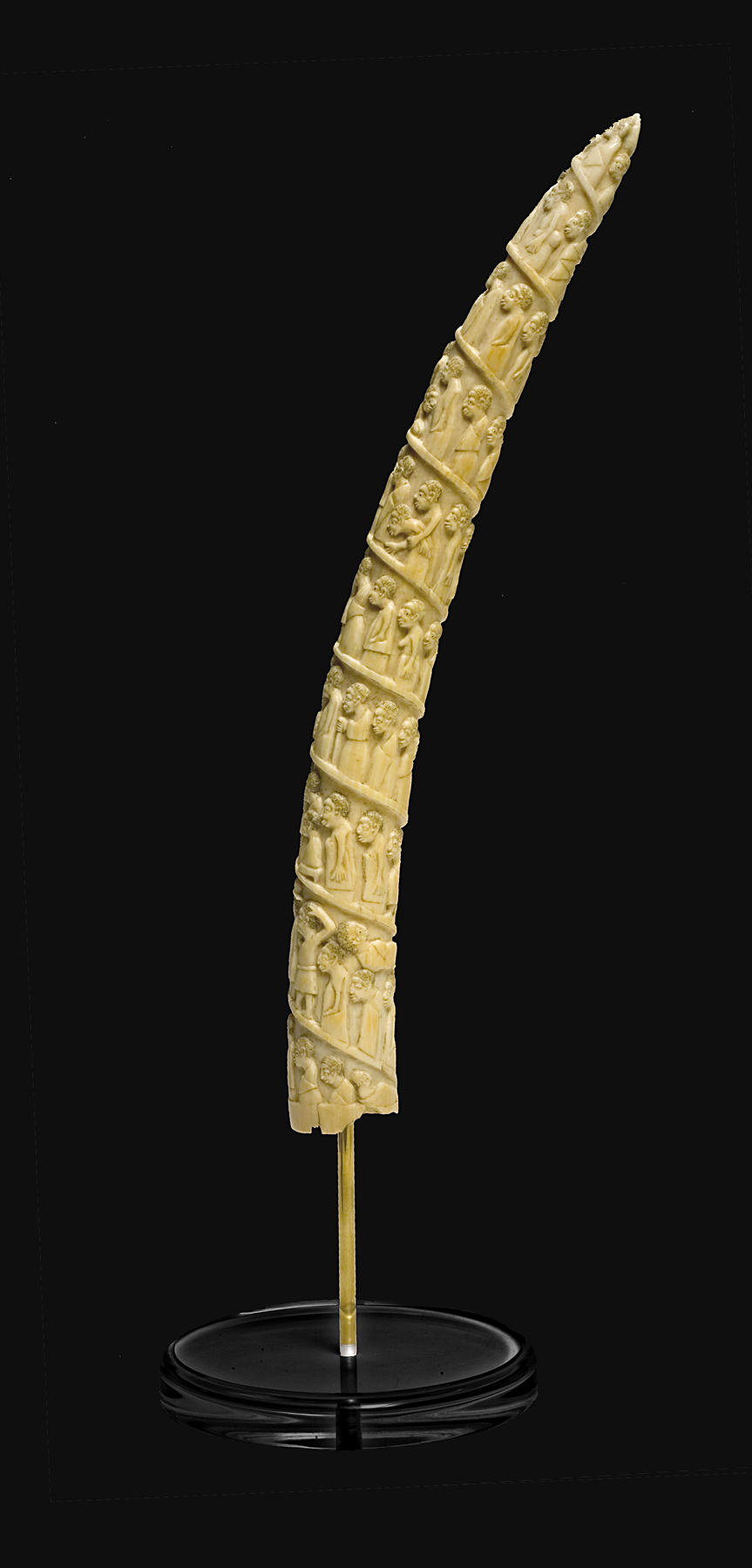carved ivory tusk, unrecorded Kongo artist
Artwork Overview
The history of this carved ivory tusk involves a global journey across four continents, three generations, and multiple political eras. Ivory carvings like this one from pre-colonial Congo emerged in the cultural context of trade routes and port cities along the coast of Western Equatorial Africa. Carved in the coastal city of Loango, the ivory likely came from an elephant in the Congo Basin. Finished works, acquired by European shippers, made their way across the seas. According to family history, Wilhelm Hamburger purchased this ivory carving in India on his way home to Germany from the Far East. In 1939, when Wilhelm immigrated to Australia, the ivory passed to the home of his son in Stettin on the Baltic coast. The ivory survived World War II; it was hidden in shelters and was even buried for a time in the family’s garden. After the Russian advance, the Hamburgers brought the ivory with them to Berlin, and then to America in 1947. It remained with the family’s descendents until its gift to the University of Kansas.
